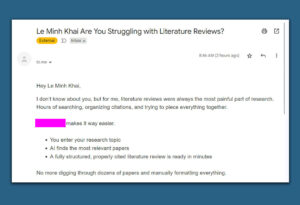The American Historical Association has issued some “Guiding Principles for Artificial Intelligence in History Education.”
If you have read any of my posts on the future (or what I see as the lack thereof) of the History profession in the AI age and think that I am being alarmist, then please read the AHA guidelines and see if you still think that way.
In particular, look closely at this chart in Appendix 2:


Ok, let’s think about this.
So, we can use generative AI (I’ll use “LLM” as its shorter) to serve as a writing partner to help generate ideas, but we can’t get the LLM to do the actual writing, even though in helping us generate ideas, it can/will produce a lot of writing that could easily fit into our article.
We can also get an LLM to produce a “starter bibliography,” but somehow we have to decide where this starter bibliography ends and the full bibliography begins.
As an LLM identifies works in our “starter bibliography,” we can use the LLM to summarize them, but then we have to be sure to go read them as well. Do we have to read every word? If not, is there a percentage that we have to read?
Then with our ideas generated in dialog with an LLM, and with our knowledge of information in articles that LLM has summarized, we write the paper. After doing so, or in the process, we can show the paper to an LLM and ask it to add additional points.
Finally, we can get an LLM to sharpen the language of our writing and to format our footnotes.
Interestingly, the AHA doesn’t say anything about primary sources. Can we upload primary sources to an LLM and get it to analyze them for us? I am not sure what the AHA thinks about that.
—–
In these “Guiding Principles for Artificial Intelligence in History Education,” the AHA is trying to establish a “dividing line” in the process of producing historical writings where the work of humans and generative AI ends and that of humans alone begins.
However, there is no way for that dividing line to be documented or verified or enforced.
No one is going to know how much help an LLM gave us in generating ideas, or how big or small the “starter bibliography” it generated for us was, or whether or not we actually read the studies in our bibliography, or whether or not we incorporated some of the LLM’s writing into our article.
Like some religious code, all of this will just be between us and. . . the History god, I guess?
As such, that dividing line certainly won’t hold.
The only alternative I can think of is for people to have to share their generative AI workspace, kind of like the way that scientists share their datasets.
So, you would do all of the generative AI tasks in one chat, and then would share a link to that chat in your paper so that a reader could check the size of your starter bibliography against the size of your full biography, and could check to make sure that the content of the paper was written by you. . .
But then that would be easy to circumvent because you could write the content in another chat and cut and paste it into the paper.
In the end, what this effort to create guiding principles shows me is that any attempt to stop the generative AI process midway is impractical.
The future of historical writing is one in which not only the above tasks that the AHA already accepts, but also significant amounts of the writing itself, will be done by generative AI.
I have yet to see any possible alternative.
Whether we like it or not, “research” and “writing” have changed forever.




It all boils down to “there is no way for that dividing line to be documented or verified or enforced.”
As a teacher/researcher, I define quality work as a clearly communicated argument sufficiently supported by credible evidence. I have no interest in trying to hunt down how, when, or where the person presenting the argument received assistance in forming it beyond verifying the veracity of the data. No one expects an author of a novel or a journal article to indicate every word and punctuation mark changed by an editor, nor does the audience of readers try to do this kind of investigation on their own. Why then are we supposed to do things differently, or hold students to different standards, only when a machine is involved?
My attitude used to be “I don’t care where you get your information. I just want to see you be able to put forth a clear and convincing argument.”
And that was something that many students struggled to do, because they would grab something from Wikipedia and couldn’t see that it didn’t fit what they were trying to say, etc.
Now that AI can do that for them, I honestly have no idea what to do anymore. Create random new hoops for them to jump through? Why?
“And that was something that many students struggled to do” — In all my years of teaching, I’ve never had a student tell me “After doing assignment X, or hearing you explain Y, I’m noticeably better at constructing a convincing argument.” And in all the literature I’ve read on cognitive science, pedagogy, and whatnot, I’ve never come across a specific evidence-supported technique for teaching this skill.
I feel like back in the early 2000s, I had some students (like 1 or 2 out of 20) who “got it” and did improve over the course of a writing intensive class (5 papers over a ~16-week semester). However, that started to drop off by say 2005, which is right when you got phone messaging and then social media. Since then, it’s pretty much been whatever level they come in at is the level they leave at.